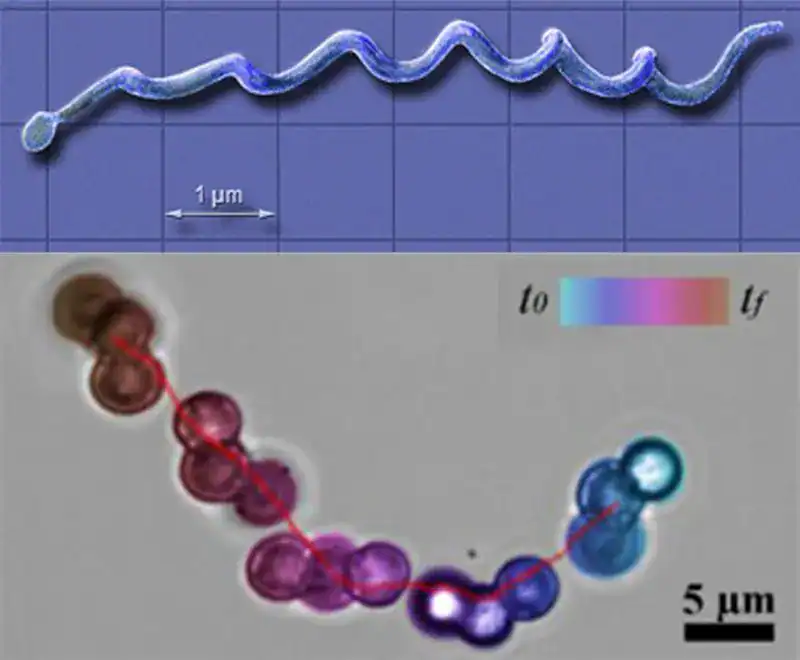Heart disease remains a leading cause of death worldwide, claiming millions of lives each year. Now, an innovative technology developed by engineers at Drexel University could revolutionize the way we treat atherosclerosis—a condition caused by the buildup of cholesterol, fat, and other substances on the artery walls.
What Are Micro-Swimmers?
These new devices are called micro-swimmers: microscopic robots, sometimes referred to as nanobots or micro-robots, designed to travel through the bloodstream. Their mission? To identify and remove arterial plaque, restoring healthy blood flow without the need for traditional invasive surgery.
How They Work
Made of biocompatible iron oxide beads as small as 200 nanometers, these micro-swimmers are assembled into a chain that forms a corkscrew—or helical—structure. This design was inspired by the bacterium Borrelia burgdorferi, which is able to move efficiently through bodily fluids.
Once inside the body, the micro-swimmers are controlled by an external magnetic field. The rotation of this field causes the chain to spin, allowing it to swim through blood vessels. The strength and direction of the magnetic field can be precisely adjusted to guide the micro-swimmers towards a blockage and control their movement based on the nature of the obstruction.
Targeted Plaque Removal
When they reach an area of arterial plaque—a hallmark of atherosclerosis—the micro-swimmers loosen the plaque using mechanical action. A small vascular drill delivered via catheter can then clear away the debris. After the procedure, the biodegradable beads in the micro-swimmers release anticoagulant drugs directly at the treatment site. These drugs help prevent future plaque buildup, reducing the risk of further complications.

Advantages Over Traditional Treatments
Current approaches for blocked arteries include angioplasty, where a balloon is inflated to open up the artery and a stent is placed, or bypass surgery, which reroutes blood flow around a blockage. Both are effective but come with risks and require significant recovery time.
This new micro-robotic approach offers several advantages:
- Minimally invasive: Delivered via catheter rather than open surgery.
- Targeted action: Directly attacks and removes plaque at specific sites.
- Drug delivery: Releases medication exactly where it’s needed.
- Reduced recovery time: Less trauma means patients can recover more quickly.
According to Dr. MinJun Kim, professor at Drexel University’s College of Engineering, “Current treatments for chronic total occlusion are only about 60 percent successful. We believe that our method could reach 80 to 90 percent success rates and possibly shorten recovery time.”

Overcoming Challenges
Developing these micro-swimmers presented unique challenges. Movement at such a small scale is governed by different physical laws; inertia is ineffective, so the team had to use asymmetric (chiral) designs with at least three beads to achieve motion. Blood itself is a non-Newtonian fluid, meaning its viscosity changes with flow speed, requiring sophisticated control algorithms based on non-linear fluid dynamics.
Next Steps
So far, these micro-swimmers have only been tested in artificial blood vessels. The international research team—including partners from Korea and Switzerland—is working toward human clinical trials within four years.
Beyond cardiovascular disease, this technology could be adapted for other medical applications—such as delivering chemotherapy directly into tumors or improving high-resolution internal imaging.
Dr. Kim, inspired by classic science fiction films like Fantastic Voyage and Innerspace, is helping to turn what was once fantasy into the future of medicine.

